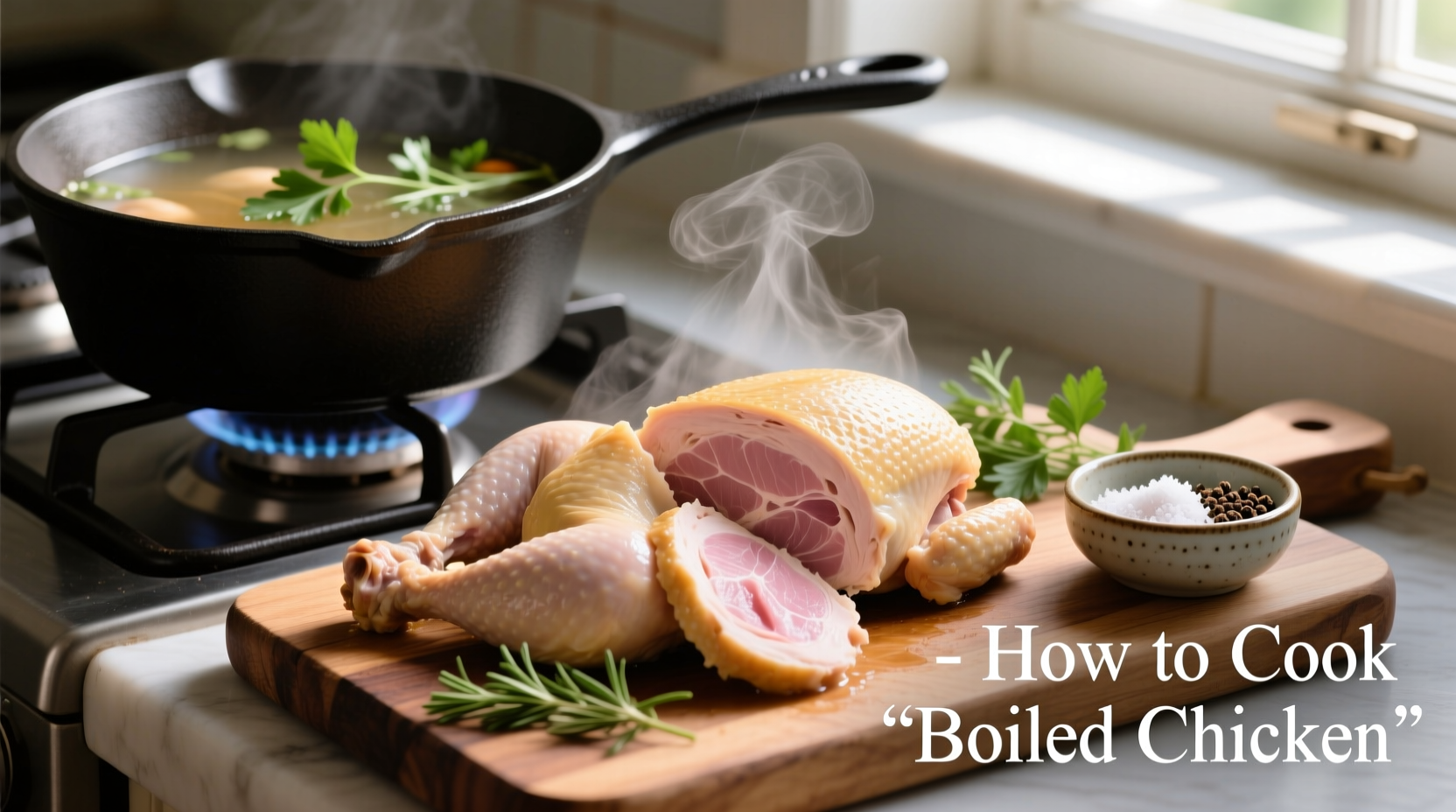Boiled chicken might seem basic, but mastering this fundamental cooking technique unlocks endless meal possibilities. Whether you're meal prepping for the week, making chicken salad, or creating a comforting soup, properly cooked boiled chicken delivers consistent, tender results without drying out.
Gathering Your Ingredients and Equipment
Before you start learning how to cook boiled chicken perfectly, assemble these simple components:
- 1.5-2 lbs chicken (boneless breasts, thighs, or a whole cut-up chicken)
- Enough cold water to cover chicken by 1 inch
- 1-2 tablespoons salt (optional but recommended)
- Aromatics (optional): 1 onion quartered, 2 garlic cloves, bay leaves, peppercorns
Essential equipment for this easy boiled chicken recipe includes a large pot with lid, tongs, meat thermometer, and cutting board. A thermometer is non-negotiable for food safety—guessing doneness leads to rubbery or undercooked chicken.
Step-by-Step Cooking Process
Follow these steps for the best boiled chicken every time, whether you're preparing boiled chicken for meal prep or immediate use:
1. Proper Chicken Preparation
Rinse chicken under cold water and pat dry with paper towels. For even cooking, ensure pieces are similar size. If using breasts, consider butterflying thicker portions. Never add chicken to already boiling water—this causes uneven cooking and tough texture.
2. Water Temperature Matters
Place chicken in pot and cover with cold water by about 1 inch. Adding chicken to cold water allows gradual, even heating. Bring to a gentle simmer (small bubbles breaking surface occasionally, not a rolling boil). A vigorous boil makes chicken tough and stringy.
| Chicken Type | Simmer Time | Internal Temp |
|---|---|---|
| Boneless breasts | 12-15 minutes | 165°F (74°C) |
| Bone-in pieces | 25-30 minutes | 165°F (74°C) |
| Whole chicken | 45-60 minutes | 165°F (74°C) |
3. Timing Your Simmer
Once water reaches a gentle simmer, set your timer based on chicken type. Start timing only after water simmers—not when it boils. For boiled chicken breast without drying out, never exceed 15 minutes for boneless pieces. Overcooking is the #1 cause of tough, stringy chicken.
4. Checking for Doneness
Insert a meat thermometer into the thickest part, avoiding bone. The USDA Food Safety and Inspection Service confirms chicken is safe at 165°F (74°C). If you lack a thermometer, cut into the thickest piece—no pink should remain and juices should run clear.
Pro Tips for Perfect Results
These professional kitchen techniques transform basic how to boil chicken instructions into consistently tender results:
- Salt water properly: Add 1 tbsp salt per quart of water for seasoned meat throughout, not just on the surface
- Rest before shredding: Let chicken sit in broth for 5-10 minutes after cooking for juicier results
- Chill for salads: For chicken salad, cool boiled chicken completely in broth before shredding
- Save the broth: Strain and refrigerate cooking liquid for soups—it's packed with flavor
Using and Storing Your Boiled Chicken
Now that you've mastered how to cook boiled chicken properly, maximize its versatility:
Immediate uses: Shred for chicken salad, slice for sandwiches, or dice for soups and casseroles. The mild flavor absorbs dressings and sauces beautifully.
Storage guidelines: According to the USDA, cooked chicken stays fresh refrigerated for 3-4 days. For longer storage, freeze in airtight containers with some broth for up to 4 months—the liquid prevents freezer burn. Always cool completely before storing.
Reheating tip: Gently warm in reserved broth rather than microwaving to maintain moisture. This technique keeps your boiled chicken recipe tasting fresh even days later.
Why This Method Works
Unlike boiling (which creates violent agitation), simmering gently cooks chicken through conduction without damaging delicate proteins. The cold-start method ensures even heating from edge to center. This approach follows food science principles documented by culinary research institutions like the Culinary Institute of America, which confirms that gentle cooking preserves moisture in lean proteins.











 浙公网安备
33010002000092号
浙公网安备
33010002000092号 浙B2-20120091-4
浙B2-20120091-4